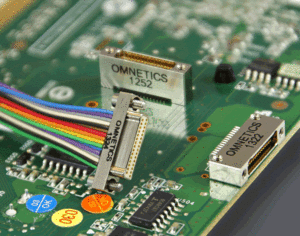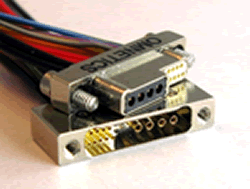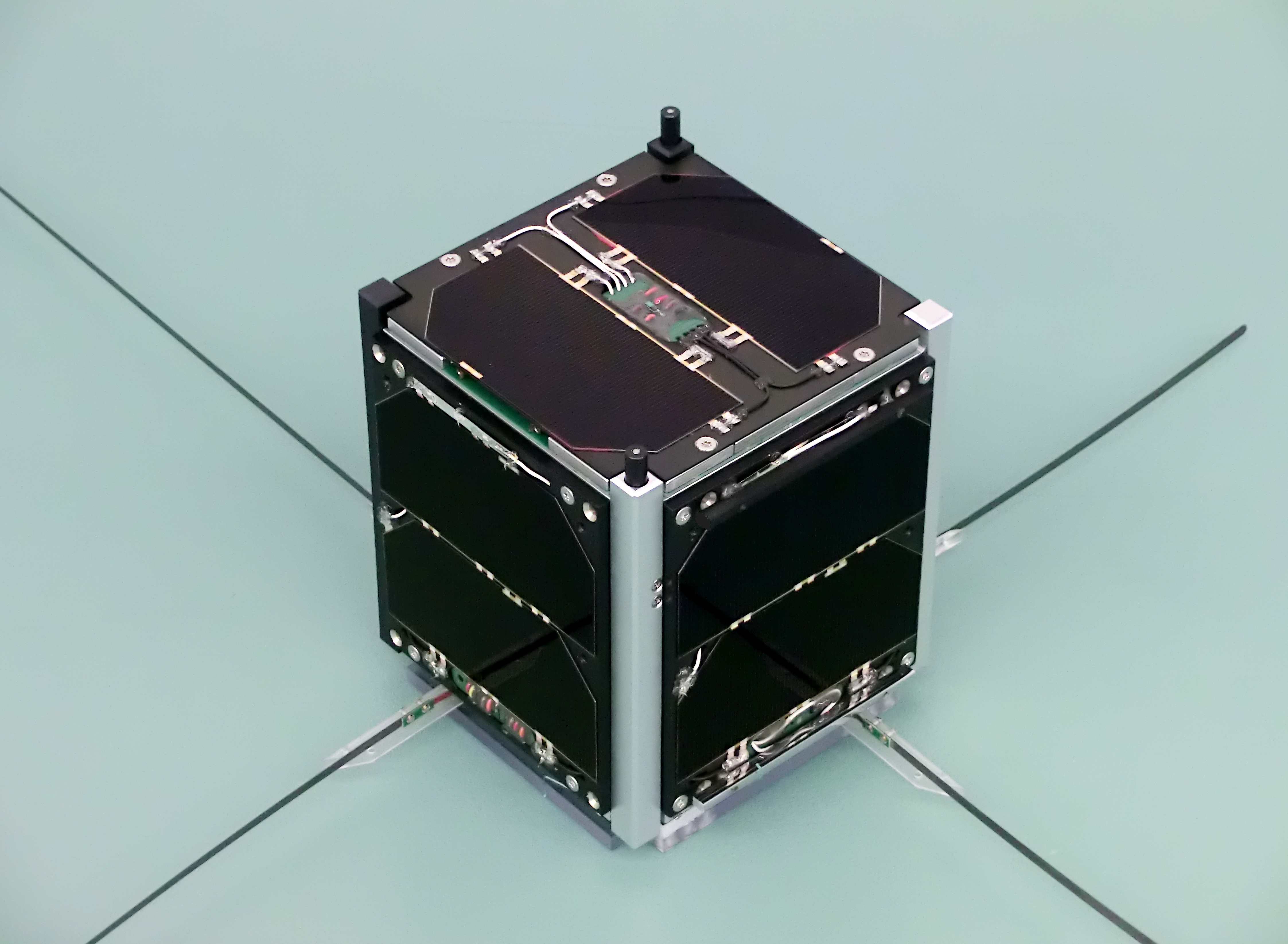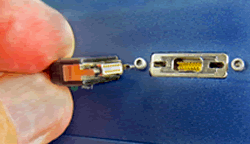The Impressive and Almighty Nano-D Connector
Small, lightweight, and known for its high-reliability performance, the nano-D connector is taking the lead in ruggedized portable electronics.

Today’s circuits face unprecedented demands. Modern applications subject systems to the rigors of portability in addition to a wide range of environmental hazards as they assist in tasks ranging from skin surface monitoring to deep space exploration. Electronic chips often function at the extreme ends of robotic devices and prosthetics. Surveillance devices are frequently mounted on street lights, or even low-elevation weather satellites. Position sensors help guide driverless cars, and our home electronics can now chat with the cloud. These applications, along with many other wireless services, come from new chip design and processing technologies.
New charge-coupled device (CCD) and enhancement mode gallium nitride (eGaN) circuits offer significantly higher signal and switching speeds in smaller, lightweight designs that operate on very low voltages and demand very little current. Existing silicon chip designs will continue to serve in many of our devices, but we are starting to see older CCDs being eclipsed by the new ones due to their faster processing capabilities. For instance, newer high-sensitivity backlit CCDs are being used for night vision technologies and photon sensors in LiDAR (light detection and ranging) equipment offer totally new dimensions in surveillance. In every area of society, high-speed data is being routed to portable processors and Ethernet systems.

Omnetics’ nano-D connectors serve in military and aerospace applications.
These devices and the modern chip technology that makes them possible impact circuit board designs as well as connector and cable selections. They are fueling the demand for miniaturization at lower voltages and current levels. As such, nanominiature D-Sub or nano-D connectors serve design engineers well in this new era.
Nano-D connectors are designed to perform at military specification levels for high reliability and to remain working in both portable applications and extreme environments. Most nano-D connectors evolved rather directly from the older micro-D connectors and follow similar specifications. Smaller and better nano-D connector designs often use a 17,200ksi beryllium copper spring-pin-to-solid-socket design to ensure signal integrity during use. As speeds go up, the wavelength of each signal is shorter, and at lower voltages, vibration and circuit noise could confuse the signal. Nano-D connector resistance is kept as low as 12 to 15 milliohms with a capacitance of 2.0pf to 2.4pf, which is ideal for most circuits with low current flow and low voltage.
With increasing speeds, capacitive coupling is also controlled by adjusting the connector insulator spacing to match the specific needs of the application. Low-skew cable technology is evolving to match cable performance to the needs of higher switching and signal speed interconnects.

Omnetics nano-D and micro-D connectors offer SWaP advantages in small-scale ruggedized applications.
Nano-D connectors have also matched the explosive growth of cube satellites and other small satellites being launched into controlled orbits. These satellites are kept in a constant attitude position as they travel in orbit to keep focused on the Earth and also communicate with one another. Satellite construction format uses electrically interconnected stacked and standardized printed circuit boards, and nano-D connectors are often chosen for these systems because of their format and size, and because many are designed with low outgassing materials specifically tested by NASA. Retention screws are also often included to ensure that mating is maintained during the duration of orbit. In addition, custom cable harnesses and flex circuits route signals from circuit boards to the connectors within the set.

FUNcube-1, also known as AO-73, is a 1U cube satellite, or cubesat. It measures 10cm x 10cm x 10cm, making nano-D connectors a good choice for size and weight considerations.
Phased-array radar techniques, photonic emission radar, and LiDAR systems are also evolving rapidly. Phased-array radar uses the principle of creating multiple points-of-source to direct the pulsed signal beam. The return signal yields a point-of-focus image instead of the large area or circle image produced in the past. Since there are many points and phase changes in each adjacent emission position of the phased radar, these systems require many pin connections from the edge of the radar transmit card to the focal beam circuit. As such, small, rugged, high-pin-count nano-D connectors are often used on the edge of the circuit boards.
LiDAR surveillance systems use similar interconnections to trigger resonance-enhanced multiphase ionization (REMPI) within an area being scanned. One major benefit of this technology is that hydrocarbon field studies can be analyzed from surveillance planes and satellites to map and reduce the cost and risk in petroleum exploration. REMPI uses a tunable laser to form a plasma beam, and high-pin-count connectors and cable are used to help set and focus the beam. The new photoemission radar systems (sometimes called photon radars) demand similar high-pin-count connectors. To assist in detecting stealth aircraft, new photon radar systems will use multi-point transmission points to help focus and track rapidly moving objects.
Connectors for space technology use only low outgassing polymers, but also include PTFE (polytetrafluoroethylene) insulated wire and cable certified to MIL-16878/4200°C. Wiring is connected to pins and sockets using high-pressure crimping technology to eliminate the potential problems of soldered leads coming into the back of the connector. When required, full specification RoHS-compliant assemblies are also available. Mixed-signal nano-D connectors that include separate sections for power and signal processing within a single connector housing are also available and can significantly reduce the number of cables being routed to and from an instrument.
Portable high-speed digital signal processing devices are also expanding the demand for small, lightweight cable and connectors. Nano-D connectors are especially well suited for these ruggedized, environmentally sensitive applications. When specified, cable, signal-speed capability, and formats are designed to match the ultra-small nano-D connectors. Designs include IEEE 1394 fire-wire cable and extend to USB 3.1 formats and CAT 6a wiring. Many of these formats support a wide range of new designs, ranging from circuitry used in small military unmanned vehicles to soldier-worn equipment.

Soldier-worn surveillance and communications equipment require small, ruggedized connectors that can endure tough conditions in the field.
Higher-speed data serial links can be supported with smaller cable and rugged nanominiature connectors and include USB 3.1, PCI Express 2.0/3.0, HDMI, and other formats capable of reaching up to 10G Ethernet (GbE) speeds. Special cable designs are sometimes needed to manage noise-induced jitter and alien crosstalk from other cable. For instance, circuit-to-circuit shielding is often used in conjunction with special noise-drain wires. Cyber intrusion and signal isolation can also be prevented using metal nano-D connectors with special backshells sealed to cable shielding.

Omnetics latching nano-D connector and nano-sized strip connectors.
Nano-D connector availability is expanding, with new variations designed to accommodate specialized applications. Their size currently accommodates up to 30AWG PTFE insulated wiring and supports many emerging technologies that use less than 1A. Short-run wiring and cabling are used to connect circuit cards and modules, and nano-D-subs make these connections easy and reliable. Metal-shell-to-cable-shield connections will provide additional cyber protection and signal interruptions from devices like jammers, and specially designed insulators, including combinations of power and signal or RF within the connector, will continue to evolve. In addition, high-speed fiber ports will be added to nano-D connectors for special applications and will work especially well in the next phases of photon energy systems. Keep watching the chip and high-speed industry and you will see the applications for nano-D connectors continue to grow.
By Bob Stanton, Director of Technology, Omnetics Connector Corporation. Learn more about nano-D connectors at Omnetics Connector Corporation.
Interested in a specific market? Click a market below for current articles and news.
Automotive, Consumer, Industrial, Medical, Mil/Aero, Datacom/Telecom, and Transportation












